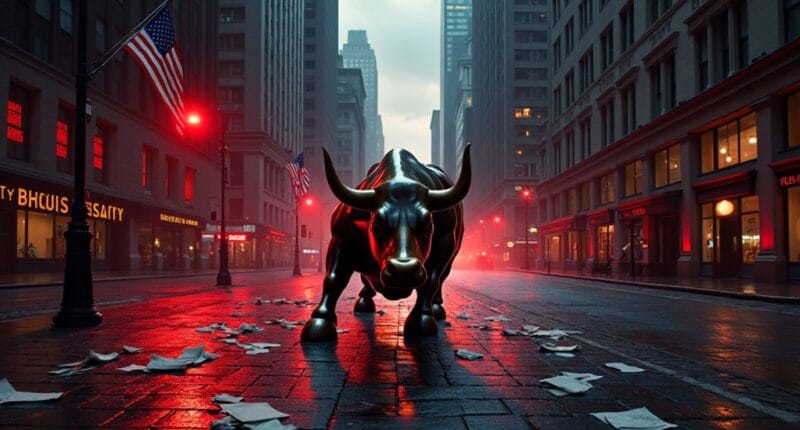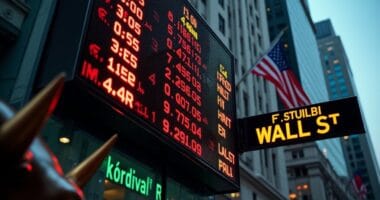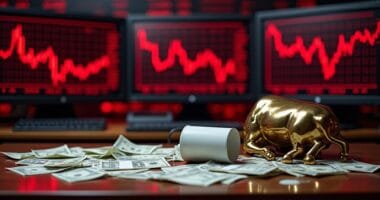Wall Street took a brutal beating as the Dow plummeted over 800 points, sending shockwaves through global markets. New tariffs spooked investors, while rising interest rates and weak manufacturing data created a perfect storm of market panic. The VIX fear index surged 30% as both retail and institutional investors rushed for the exits. With GDP projections trending down and valuations stretched thin, this crash might just be the bull market’s final gasp. The full story runs deeper than the numbers suggest.

As panic gripped Wall Street today, the stock market took a nosedive that left investors scrambling and analysts reaching for historical comparisons. The Dow Jones plummeted over 800 points in a single session, while the S&P 500 hemorrhaged 3.5% – the kind of bloodbath that makes seasoned traders reach for their antacids.
Tech stocks got absolutely pummeled. Apple and Microsoft shareholders watched their portfolios shrink faster than a wool sweater in hot water. Trading volume shot up 20%, proving that nothing motivates Wall Street quite like pure, unadulterated fear.
The perfect storm of bad news hit like a sledgehammer. New tariffs spooked the market, rising interest rates made borrowing more expensive, and manufacturing data looked about as healthy as a three-day-old hamburger.
Markets took a triple hit from trade tensions, costlier borrowing, and dismal factory numbers – a knockout punch to investor confidence.
Meanwhile, bond yields started looking mighty attractive to investors who decided stocks were just too spicy for their taste.
The carnage wasn’t limited to American shores. European markets caught the same flu, with the FTSE and DAX dropping over 2%. Asian markets followed suit because, apparently, market panic is the world’s most reliable export.
Gold prices jumped 2% as investors scrambled for safety like teenagers running from a horror movie villain.
The VIX – Wall Street’s famous “fear index” – skyrocketed 30%. Hedge funds started betting against the market, and retail investors yanked their money from mutual funds faster than you can say “market correction.”
Even the usually stoic institutional investors decided fixed income looked pretty good right about now.
Some experts are drawing parallels to the 2008 financial crisis and the dot-com bubble burst, though they’re quick to point out that today’s systemic risks are lower.
The Federal Reserve is standing by with its financial first aid kit, and the government’s talking stimulus measures.
But with GDP projections heading south and valuations looking stretched, the question on everyone’s mind is whether this crash just killed the bull market for good.
Statistical arbitrage algorithms kicked into high gear as trading firms sought to capitalize on the market volatility through automated pattern recognition.





